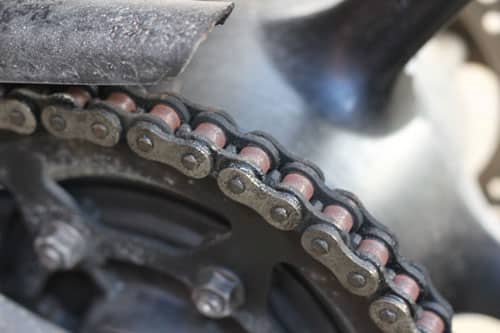If you’re a cyclist, chances are that you’re familiar with the scourge that is rust. Not only does it ruin your paintwork, but it affects your bike’s performance and ultimately your riding experience.
In this article from Tru-Tension, manufacturers in high quality bike maintenance equipment, our experts explore the negative effects rust can have on your bike and share their top tips on how to spot the early signs of rust and how best to treat it to prevent any further damage to your pride and joy.
What is Rust and How Is It Formed?
To understand how damaging rust can be, it helps to know what it is.
Rust is the by-product of a chemical reaction. It happens when oxygen and moisture combine on a metal surface to form iron oxide, which is the red-orange flaky substance you often find on cars or bikes.
Bikes and other vehicles are particularly susceptible to rust because of prolonged exposure to salty air and moisture from rainwater and puddles on the road.
If the first signs of rust are not treated, it will get worse and weaken the structure of your bike.
Why Does Rust Pose a Danger to Cyclists?
Ultimately, rust is corrosion on the metal of a bike frame, if left untreated for a prolonged period of time, this can lead to the metal becoming weaker and intime lead to structural failure.
Here are the key areas and components on your bike that are most susceptible to rust and cause you the most danger:
Chassis
A common cause of rust on your bike chassis is chipped paint. The paint on your bike chassis is what protects the metal beneath from exposure to the elements, meaning that if the paint starts to flake and fall off, your bike will be vulnerable to rust.
Rust weakens the structural integrity of the metal, making it brittle and prone to snapping during a ride, which is something none of us want to deal with!
Chain
Rust corrosion on your bike chain is particularly dangerous, especially during a ride. If rust has weakened the integrity of the links, the next time you put your foot on the pedal your chain could snap. This could leave you stranded with a broken bike, or worse, if you’re riding at the side of the road, this could cause you to lose control of your bike and cause an accident.
Engine
If you’re a motorcyclist, rust that has corroded your bike engine can cause significant damage, circulating in your engine and affecting how well fuel flows through your bike and ultimately affecting the way it rides.
How to Spot Rust Early
When it comes to preventing rust from forming it helps to know how to spot it early. The first sign of rust that you need to look out for is paint that looks as though it is bubbling or blistering. White powder or chalky residue may also emerge from the bubbles.
Paint damage like this means that moisture has gotten into the paintwork and corrosion is happening beneath it. If you’ve noticed this on areas of your bike, we recommend that you sand the area down, prime it and repaint it, making sure to keep the area dry as you do so.
If these areas go untreated, you could find yourself dealing with a much larger problem in the form of rust scale further down the line, so the sooner you treat your paint issue the better.
If you don’t ride your bike that often, you may miss this sign early on, so aside from the red-orange rust scaling on the body of your bike, another indication that your components have rust damage are noises such as grating or squeaking.
We recommend that you regularly inspect your bike before and after you ride so that you notice these changes and can carry out the treatment.
How to Prevent Rust from Forming
While it’s all too easy for your bike to become the victim of rust, it’s possible to avoid it with a bit of simple and regular maintenance.
Here are the 3 ways you can treat rust to improve the lifespan of your bike components:
Apply Bike Chain Lubricant
First, you will need to remove any of the grime and dirt that has accumulated in your bike chain. You can wipe it away with a cloth or a soft bristled brush. Once your chain is clean, you can apply a bike lubricant like Tru-Tension Bananaslip Wet Lube along the length of the chain.
Regularly Clean and Maintain Your Bike
When cleaning your bike, avoid using water. Water can combine with the dirt that has worked into the components creating a paste-like grime that will hasten the rusting process.
We recommend using products that don’t need to be rinsed away and work to repel moisture, like Tru-Tension Snow Foam, or Tru-Tension Maintenance spray.
Store Your Bike Sensibly
Lastly, one of the best ways to prevent rust is to store your bike in a dry and sheltered area, such as a shed or garage to prevent prolonged exposure to air and moisture.
Bike Cleaning and Maintenance Products from Tru-Tension
At Tru-Tension, we understand that once rust has got its hold, it’s a tough beast to tackle.
That’s why we designed a range of quick and easy cleaning and maintenance products to help you keep it at bay.
Explore our full range of bike care products >
If you have any questions about our products, don’t hesitate to get in touch with our team of bike experts today, we’re here to help!

